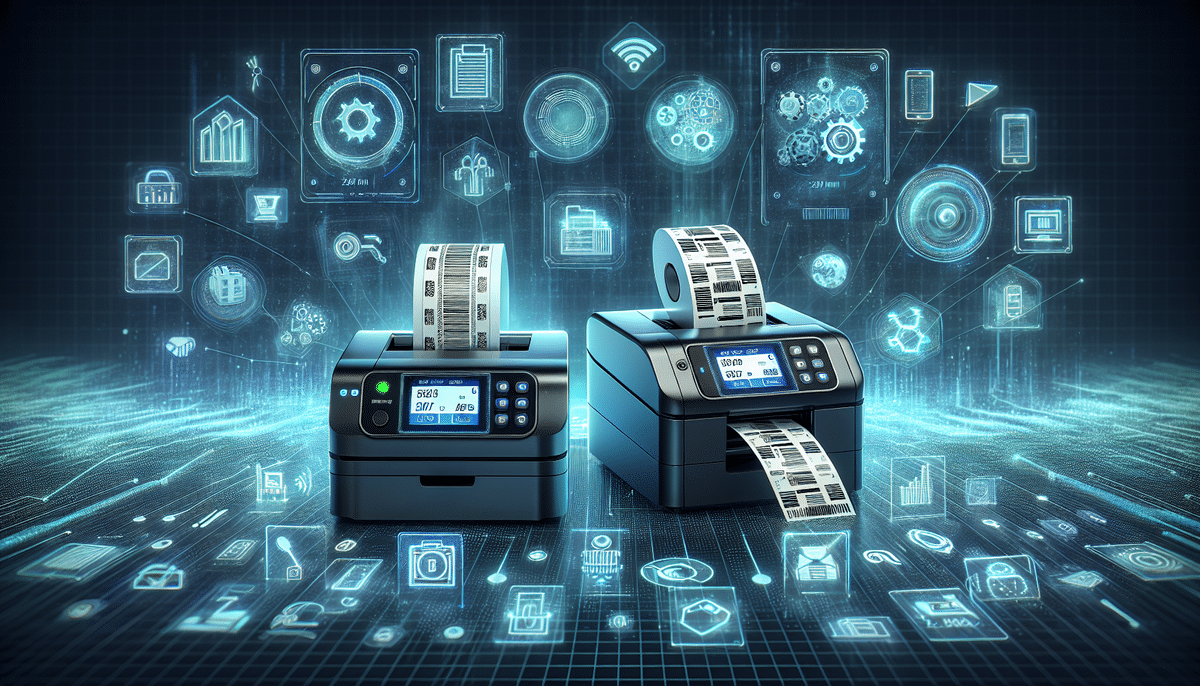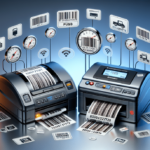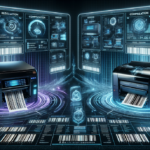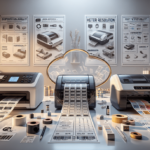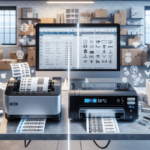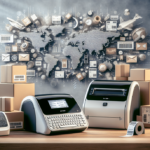Introduction: The Vital Role of Label Printers in Modern Businesses
Label printers are indispensable tools for businesses that require frequent and precise labeling. They enhance efficiency, save time, and improve accuracy in labeling processes across various industries. This article provides an in-depth comparison of two popular label printers: the Rollo Label Printer and the Arkscan 2054A, helping you determine which model best suits your business needs.
Overview of Rollo Label Printer
The Rollo Label Printer is a high-performance thermal printer designed for versatility and speed. Capable of printing labels up to 4 inches wide at a resolution of 203 dpi, it supports both Windows and Mac operating systems. Connectivity options include USB, Ethernet, and Wi-Fi, catering to diverse business environments.
One of the standout features of the Rollo Label Printer is its impressive printing speed of up to 150 mm per second. Utilizing thermal printing technology, it eliminates the need for ink or toner, reducing maintenance costs. The accompanying user-friendly software offers a range of templates and design tools, enabling businesses to create professional-quality labels effortlessly.
Moreover, the Rollo Label Printer is compatible with various label types, including shipping labels, barcode labels, and product labels, ensuring flexibility for different business requirements. Its durable construction and high-quality output make it a reliable choice for high-volume labeling tasks.
Overview of Arkscan 2054A
The Arkscan 2054A is another robust thermal label printer, offering advanced features suitable for small to medium-sized businesses. It prints labels up to 4 inches wide at a higher resolution of 300 dpi, ensuring sharper and more detailed prints. Compatible with both Windows and Mac, it provides connectivity through USB, Ethernet, and a serial port.
Designed with a compact form factor, the Arkscan 2054A is ideal for businesses with limited workspace. It boasts a fast printing speed of up to 5 inches per second, making it efficient for businesses with significant label production demands. Its durable plastic casing withstands rigorous use, ensuring longevity and consistent performance.
The Arkscan 2054A supports a wide range of label materials and sizes, accommodating various labeling needs from shipping to product identification. Its ease of use and reliable performance make it a favorite among small business owners.
Detailed Comparison Between Rollo Label Printer and Arkscan 2054A
Features and Specifications
When comparing the Rollo Label Printer and the Arkscan 2054A, several key differences emerge:
- Printing Speed: The Rollo offers a faster speed of 150 mm per second, while the Arkscan prints at 127 mm per second.
- Resolution: Arkscan leads with a higher resolution of 300 dpi compared to Rollo's 203 dpi.
- Connectivity: Rollo provides more connectivity options, including Wi-Fi and Bluetooth, whereas Arkscan includes a serial port.
- Durability: Rollo features a metal frame with a monthly duty cycle of 10,000 labels, while Arkscan has a plastic casing with a duty cycle of 5,000 labels.
Print Quality and Speed
The Arkscan 2054A's higher resolution ensures sharper prints, making it ideal for applications requiring detailed barcodes and graphics. Conversely, the Rollo Label Printer's superior speed enhances productivity, especially in environments with high labeling demands.
Both printers deliver clear and precise text and images, but the choice between them depends on whether speed or print quality is a higher priority for your business.
Connectivity Options
Connectivity plays a crucial role in the versatility of label printers. The Rollo Label Printer's inclusion of Wi-Fi and Bluetooth allows for wireless printing from multiple devices, offering greater flexibility. Additionally, Rollo's Ethernet connectivity supports seamless integration into networked environments.
Arkscan 2054A, while offering USB and Ethernet connections, includes a serial port option, which may be beneficial for specific legacy systems. Its proprietary mobile app also enables direct printing from mobile devices without the need for additional software.
Ease of Use and Setup
Both printers come with user-friendly software, but the Arkscan 2054A's compact design and straightforward setup make it particularly suitable for small businesses and home offices. Rollo's advanced connectivity features may require more initial configuration, which could be a consideration for businesses with limited technical resources.
Technical support availability is another factor; Arkscan provides a one-year warranty and free technical support, while Rollo offers support that may incur additional costs depending on the service level required.
Pricing and Value
In terms of pricing, the Arkscan 2054A is generally more affordable than the Rollo Label Printer. However, the Rollo's enhanced speed and connectivity options may offer better value for businesses with higher labeling volumes and diverse connectivity needs.
It's essential to weigh the initial cost against long-term benefits such as print speed, connectivity flexibility, and durability to determine which printer offers the best return on investment for your specific requirements.
User Reviews and Feedback
Feedback from users highlights the strengths of both printers. The Rollo Label Printer is praised for its fast printing speed and versatile connectivity, making it a favorite among larger businesses with high labeling demands. Users also appreciate the high-quality prints and robust build quality.
The Arkscan 2054A receives commendations for its compact design, ease of use, and reliable performance in smaller business settings. However, some users have reported minor technical issues, such as connectivity glitches, which can be a drawback.
Overall, both printers are well-regarded, but the choice ultimately depends on the specific needs and scale of your business operations.
Final Verdict: Choosing the Right Label Printer for Your Business
Selecting the appropriate label printer hinges on your business's unique needs and budget constraints. If your operations demand high-speed printing and robust connectivity options, the Rollo Label Printer is an excellent choice. Its ability to handle large volumes and diverse label types makes it suitable for expanding businesses.
On the other hand, if you run a smaller business or operate within a limited workspace, the Arkscan 2054A offers affordability, compactness, and sufficient performance to meet everyday labeling needs without compromising on quality.
Consider conducting a cost-benefit analysis based on your specific labeling requirements, volume, and preferred connectivity options to make an informed decision.
Conclusion: The Importance of Investing in the Right Label Printer
Investing in a reliable label printer is crucial for businesses that depend on accurate and efficient labeling. Whether you choose the Rollo Label Printer for its speed and connectivity or the Arkscan 2054A for its compactness and ease of use, the right printer can streamline your operations, reduce errors, and save valuable time.
Before making a purchase, assess your business needs, explore various models, and read user reviews to ensure you select a printer that aligns with your operational goals and budget. A well-chosen label printer not only enhances productivity but also contributes to the overall professionalism and efficiency of your business.















